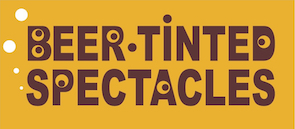Crikey – talk about the hissy fit in UK craft beer. Camden Town sell out to ABI, particularly following Meantime falling to SAB and Brewdog, most publically, have a meltdown, kick out Camden products and declare Perpetual Independence.
Let me tell you up front though. I put some money into Camden Town Brewery. This doesn’t make me anti-Brewdog nor pro Camden. In this case, it was an investment, nothing more. I believe now, as I believed when assessing whether to make an investment in them, that they were a sound place to put some hard-earned brass. Here is (was) my rationale:
Firstly, the owners were not the types to be in it for the long term; amongst them Sir John Hegarty. He’s an Advertising Man – he has helped companies build their brands to increase the value of their companies all his working life; he’s also built businesses himself and become a ‘Sir’ as a result. We’re not talking about fighting for a ‘cause’ here like Keith Grossman or Jack McAuliffe or Fritz Maytag were in the 1960s and 1970s USA. Back then, beer was on its knees; behemoth brewers with gargantuan breweries churning out identikit pale ‘lager’. There was something to fight for. London, 2010 – the year Camden Town Brewery was founded? Frankly the craft beer craze was maturing, or accelerating at least. You could well ask 5 years ago, just as much as you could now: do we really need another craft brewery?

Well yes, in a way – and here’s my second point. Camden Town was pushing for difference. It built itself around lagered beers, as well as some well brewed specialities – their Wit stands out in particular for me. Most other craft brewers – as much for practical and cost reasons than anything else – stick to ale and top fermentation. So do we really need another craft brewery? No, unless, like Wild Beer Company say, you do something that stands out. You can argue that Camden beers aren’t that different – but in a sea of craft brewed ale, there was little craft brewed lager in 2010; and even accounting for Meantime, still plenty of capacity to push into that space in London alone.
Thirdly, brand. Oh, I know what the purist will argue: the whole point that craft fights against is mass produced brands of non-descript lager: Carlsberg, Carling, Fosters, Stella, Peroni. But that’s an assumption based on a generalisation: that we all want something different. We don’t. Most of us, most of the time, want choices that are reliable and safe. That doesn’t – and I must stress this – doesn’t mean bland, everyday choices – but choices that we feel confident in; that we discovered, found ourselves, trust and that make us feel different. And it doesn’t mean niche. What the team at Camden did brilliantly is screw together an incredible brand: an amazing brand design and identity across the whole range that sings from the bar. A hellishly beautiful tone of voice that unites all their communication. Events, that bring you in to the Camden community and locality, yet which speak to us more widely. These guys didn’t set out to build a brewery, they set out to build a brand and they have done it incredibly.
And whilst I was in it for the long term – looking forward to my ‘Hells Raiser’ annual beer and trips to the AGM – equally, I fully expected Camden to sell; I just wasn’t expecting it to be in the first six months.
Throughout this, Brewdog’s behaviour has been fascinating – and two-faced. Immediately stopping-selling Camden products in their bars, because ‘they don’t sell anything by ABI’ (the small matter that the deal hasn’t gone through yet is a mere trifle) is one thing; but changing their origin story is another. Read their guff; it’s moving; it’s from the heart. But it’s a story. It’s economical with the truth. When Brewdog launched they were quite happy to trade with the mega-breweries they now despise to get their product to market. With Carlsberg. With Molson Coors. With Tesco. With Punch Taverns. I imagine that they still do. They were perfectly happy to buy into the hard work of these companies in building distribution channels and quite happy to grow their brands off the back of them. But that’s been deleted out of their official history now. But the real irony? Brewdog is a lesson in branding. Their beers are fine – nothing more. They’re no better or worse than other craft beers of their styles. The real difference is in the clothes that they wear; their attitude and use of the f-word like a teenager trying to impress his mates. If we truly drunk with our mouths and tastebuds and not our eyes we would all see Brewdog beers for what they are: great brand, average beer.
And there’s an interesting footnote here too: Camden went for about £85m; Meantime about £115m. Molson Coors back in 2010 bought Sharps for £20m… £20m for a larger brewery; in a beautiful location that gives the brand romance, with a leading brand in Doom Bar. Molson Coors must be having a little chortle to themselves now. But it also shows that the money is to be made in great brands – and more interestingly it seems, in lager.
© Beer Tinted Spectacles, 2016
